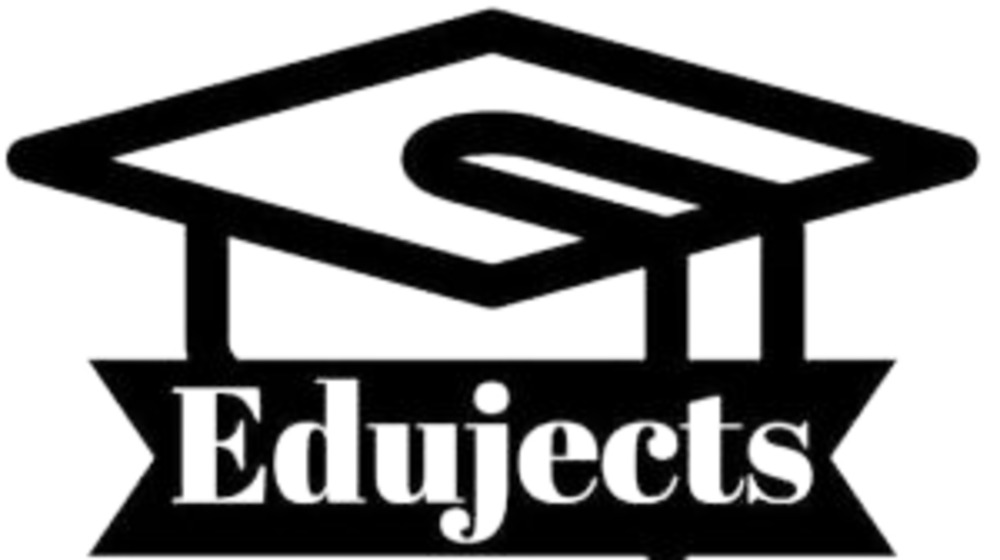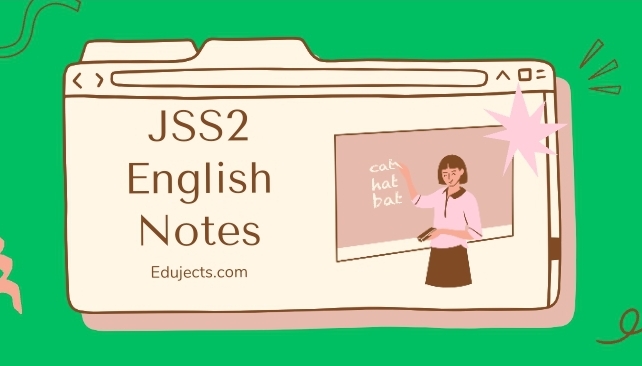JSS2 English Lesson Note – First Term. Get complete lesson notes and plan for the week here.
PERIOD 1
Revision on Pure Vowels
The production of vowel sounds take place as the air stream flows from the lungs to the mouth without any obstruction.
Classification of Pure vowels and Diphthong
The vowel in English is classified into two main groups: pure vowels also called ‘monophthongs. The monophthongs are further sub – divided into short vowels and long vowels.
READ ALSO: SS1 English Lesson Notes and Plan- Third Term
Monophthongs /pure vowels: These are single sound segments.
- /i:/ as in seat, key, chief,
- . /I/ as in sit, pretty, women, village, enough, waited
- /e/ as in pen, head, any, bury, ferry, bread, rest
- /әe/ as in cap, had, hand, plan, tank, sad, mat
- /a:/ as in hard, father, heart, path, dark, far, arm
- /D/ or/Ɔ/ as in cot, cock, wash, clock, hot, lot, shop
- /Ɔ:/ as in court, fork, cork, tall, law, bought, fore
- /Ʊ/ as in good, foot, cook, book, should, woman
- /u:/ as in moon, rude, loose, lose, soup, flute, juice
- /˄/ as in sun, mother, come, cup, fun, money, but
- /3:/ as in firm, bird, first, shirt, skirt, term, serve
- /ә/ as in allow, above, around, doctor, sister, alive, forget, religious
Diphthong: This refers to the combination of two vowels in a single syllable to produce a word.
- /ei/ as in play, rake, pale, state, cake, day, wake
- /ai/ as in pie, my, height, plight, mite, bright
- /ͻi/ as in oil, boy, buoy, toil, foil, noise, joy
- /әu/ as in go, hoe, home, no, know, coat, goat, rose
- /au/ as in house, now, cloud, rowdy, brow, howl
- /iә/ as in fear, cheer, beer, idea, serious, here, near
- /eә/ as in heir, air, etc.
- /ei/ as cake, fake, make, date, etc.
Example in Sentences
- The police seized the key of the ca (/i:/)
- Young people now have choices of employ (/au/, /ͻi)
PERIOD 2
Part of speech is the category to which a word is grouped according to the function it performs when arranged in a sentence.
| Part of Speech | Example (Words) | |
| NOUN | pen, dog, work, music, town, London, teacher, John | |
| VERB | (to) be, have, do, like, work, sing, can, must | |
| ADJECTIVE | some, good, big, red, interesting | |
| ADVERB | quickly, silently, well, badly, very, really | |
| PRONOUN | I, you, he, she, we, they, your | |
| PREPOSITION | to, at, after, on, before, around, over, of, in, for, with, throughout, from, beneath | |
| CONJUNCTION | and, but, when, or, however, although, nevertheless, therefore, yet, so | |
| INTERJECTION | oh, |
Example (Sentences):
- Moneydoesn’t grow on trees (nouns)
- I like cats or(conjunction)
- George wants his paper back. (pronoun)
PERIOD 3
Review of the SQ3R Technique
What is SQ3R?
The acronym SQ3R stands for survey, question (or query), read, recite, review. It is a method designed to improve reading comprehension.
Survey: This step involves quickly skimming through the material before you start reading it in-depth. Pay attention to headings, subheadings, bullet points, and any visual aids like images or diagrams. The goal is to get a general sense of the structure and main ideas of the text.
Question/Query: Generate questions about the text that you can answer as you read it. These can be general (e.g. What is this section about?), more specifically targeted at the content of, say, the subheadings, or targeted at how the knowledge might be useful for your purposes.
Read: Start actually reading, but as you do, use the questions that you generated above to create a more active reading process.
Recite: Describe what you have just read. This could be done out loud or in written format, but try to recall everything in your own words.
Review: Come back to the material again to review, trying to answer the questions that you generated before.
Reading Comprehension passage:
Topic: How we Spent the Holiday (see page 2. New Oxford English Course for JSS2)
-Questions and answers
Word for the Week
- Conceive
- Occasionally
- Secede
- Apologize
- Kernel
- Colonel
- Ignorance
- Inoculate
- Hierarchy
PERIOD 4
Writing an outline for Narrative Essay
An outline provides a clear and logical framework for your essay, ensuring that your writing flows smoothly and that you cover all the necessary points. When you read a story or passage, it is important to know how to pick out the main points raised in it. Every paragraph in a passage contains a key word, or sentence which is more important than others.
Tips for Outline Writing
- Before writing a paragraph, decide on what it should contain as the main point.
- Read through any passage you are given carefully to get the main points.
- Jot down the main points.
- Arrange all you have jotted in a sequential order.
- Think of a suitable heading for the passage, if not already given.
- Remember to start your sentence with a capital letter and with the appropriate punctuation mark.
- Always indicate a paragraph.
- Make use of your dictionary to find out meanings of difficult words.
Class Activities:
Read the story on page 7 and study the points in paragraphs.
Analyzing main points from the passage:
Paragraph 1: Yashim the lorry driver was hungry.
Paragraph 2: He began to dream of the good supper.
Paragraph 3: A little boy fell in front of the lorry.
Pragraph 4……………..
Pragraph 5…………….
JSS2 ENGLISH LESSON NOTE FOR WEEK 1
PERIOD 5
PROSE
Prose is a written or spoken language that is not in verse form. It can also be defined as long, free written work done in sentences, paragraphs and chapters. Prose can be in form of narrative or descriptive.
Features of Prose
- Plot: This is the events that make up the story.
- Characterizations: These are the people who are portrayed in a book, play or movie.
- Theme: Thisis the central idea which runs through text or play.
- Settings: This refers to the location of the story, that is, where the incident takes place.Setting also depicts the period or era of historical events.
Figures of speech
Figures of speech refer to expressions used in a special way for a concise and forceful effect.
Writers or speakers use figures of speech to make their messages quite clear, to create certain image or feelings in the mind of the hearer or speaker.
Some examples of Personification: Inanimate objects are treated as human beings. Example:
- My is car coughing.
- The trees are waving and dancing.
- The sun is smiling.
Hyperbole: This is an overstatement or exaggeration for emphasis or a satirical effect. Example:
- I told you this 20,000 times.
- I can eat a mountain bowl of Eba.
- I saw a sea of blood at the accident scene.
Alliteration: is the repetition of the same consonant sounds in sequence.
Example:
- Seven sisters slept soundly on the mat.
- Thecat caught a crafty mouse.
- What is prose?
- . List the features of prose and explain them

